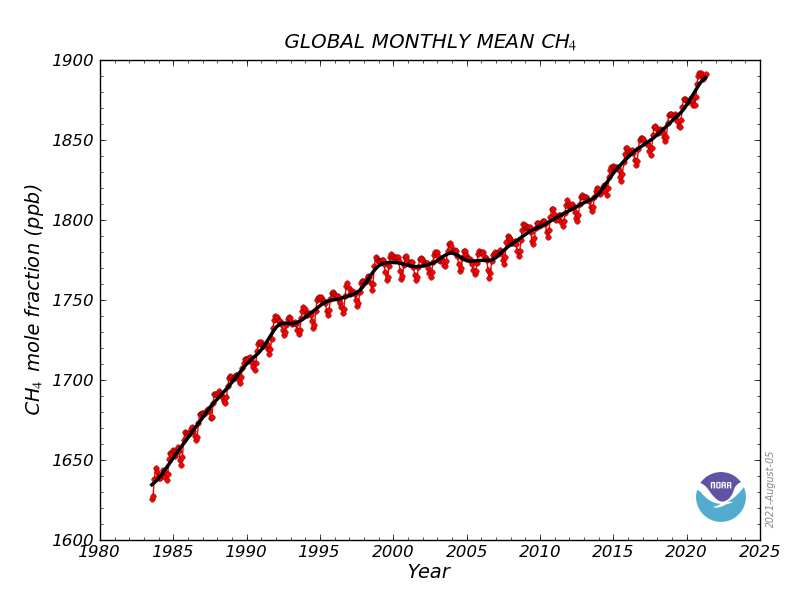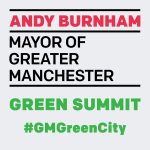
Quantifying the effect of greenhouse gases (GHGs) on global warming, such as methane helps us to understand where we can best focus our efforts to combat climate change. Here I will be discussing the strengths and weaknesses of the way we measure greenhouse gas impacts for the second most significant gas, methane – whose inexorable rise is shown left.
There are well over 100 different GHGs, each having a varying warming effects – that is to say they absorb infrared light to different extents and in different parts of the electromagnetic spectrum. The lifetime of these gases in the atmosphere differs a lot: some like methane, CH4, are broken down by chemical processes in a relatively short time, around 12 years, and others like sulfur hexafluoride, SF6, are very long-lived, taking in the order of 3,200 years to be eliminated.
For carbon dioxide, CO2, there are a number of different ways that it is removed from the atmosphere, some relatively fast like dissolution in sea water over 30-80 years, and some very slow, such as weathering reactions with rocks over hundreds or thousands of years, so precisely pinning down its lifetime is still to be done. As a result CO2 is generally assumed to have a lifetime of at least a hundred years.
A further complication is that some of the breakdown products of these gases may be GHGs in their own right, for example, methane eventually breaks down into long-lifetime carbon dioxide (through a series of intermediate chemical processes primarily involving radical chemistry in the stratosphere) and water, with a very short lifetime, meaning that even after it has decayed, methane has a residual warming effect with variable persistence.
To simplify the process of calculating the combined effects of lots of different emissions, we have created a measure called the Global Warming Potential, GWP, for each of the greenhouse gases.












